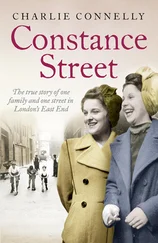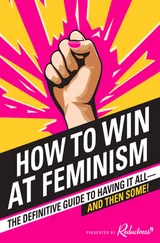Charles Gildon, a shady figure in the literary world, used the oriental perspective to attack orthodoxy in his Golden Spy (1709). 66 In The Oracles of Reason (1693), which he compiled with Charles Blount, he used the antiquity of Chinese and Indian culture, just as the Turkish Spy had done, to undermine faith in the absurdly dwarfish history in the Bible. 67
Gildon’s anonymously published The Post-boy rob’d of his Mail (1692), as the title suggests, is a miscellany of letters like the Turkish Spy , and one of the letters contains a rare account of Thomas Tryon’s followers. Gildon co-opted Tryon’s vegetarianism into an anti-Christian political statement by emphasising that Tryon derived his beliefs from the Hindus, not from Christian Scripture, and that he thought eating ‘our Brethren and Fellow-Creatures’ was ‘Opression’ and ‘qualifies Men to be sordid, surly, and Soldiers, Hunters, Pirates, Tories, and such as wou’d have the bestial Nature fortify’d; that they might act like Lions, and Devils, over their own kind as well as over all other Creatures’. 68 So it seems that Gildon, Blount, and possibly the authors of the Turkish Spy , recognised some common ground between their own views and Tryon’s vegetarianism. Gildon may have been encouraged to do this by their mutual friend Aphra Behn. Perhaps the vegetarian ideas in the Turkish Spy were inspired by or even supposed to be a mockery of Tryon. 69
Although Tryon subscribed to all sorts of mystical inventions, he shared with the radical sceptics a desire to erode traditional orthodoxies. His ‘East-Indian Brackmanny’ is a precursor of Mahmut as an Oriental vegetarian critic of Western society, and his Letters From Averroes (1695) combines this Oriental critique with the letter format which slyly uses a Muslim character to challenge Christian dogmatism. 70
At the end of the seventeenth century the vegetarian question was as prominent as it ever has been in Western intellectual debate. The parameters of culture were shifting radically. The exclusive powers of the Church were giving way to unorthodoxy, empiricism and relativism. Political turmoil and monarchy in Britain were replaced, in the Glorious Revolution of 1688, by constitutional democracy which fostered open-minded debate. Enlightened intellectual movements combined with new access to information on foreign cultures to challenge traditional values. Fundamental assumptions were under constant review, and the right to eat meat was one of them. With the flood of information on the vegetarian Indians, more and more people were questioning their long-held belief that eating animals was a natural, necessary part of human life. There were so many prominent thinkers from widely different intellectual backgrounds who were challenging the practice of killing animals that it is hardly an exaggeration to say that the late seventeenth century harboured a vegetarian renaissance. In many minds at least, there had been a bloodless revolution.
PART TWO Meatless Medicine
TEN Dieting with Dr Descartes
René Descartes was born in La Haye in 1596, and when he was one his mother died of a lung disease which he inherited. He was a sickly baby and was not thought likely to survive, but survive he did, and in combating his own weak constitution he came to believe that he had found the secret to long life. His blend of solitary reflection and steadfast adherence to mathematical reasoning created a new climate in European philosophy which, by the end of the seventeenth century, had flourished into the Natural Philosophy of the Enlightenment. Rather than relying on second-hand religious doctrines, Descartes showed how to establish truth firmly on the principle of ‘Reason’. This breach with religious tradition created a need to reconstitute the mandate for man’s superiority over the rest of creation. But Descartes’ legacy was an enduring schism in European thought, the remnants of which can still be felt today.
At the Jesuit school of La Flèche, he had been raised from the age of eight on the old school theories of Aristotelian philosophy and Augustinian theology according to which the world was divided into matter, immaterial spirit and an ‘intermediate substance’. When Descartes came to scrutinise his education with his rigorous method of sceptical reasoning, he agreed with the Aristotelians that humans had an immaterial rational soul: as he explained in his Meditations (1641), the fact that he could say ‘I think, therefore I am’ proved this beyond doubt. He also agreed with the Aristotelians that animals lacked the rational soul – their inability to speak languages was proof enough of that. But he thought that the Aristotelians’ claim that animals were animated by an intermediate sensitive soul was meaningless mumbo-jumbo. If animals had no soul, they had to be made purely of matter, and as Descartes believed that matter by itself could not think, he concluded that animals were just like soulless machines. All their actions were the result of automatic material cause and effect; they did not even have feelings or sensations as humans did. They were only alive in so far as the heat of their heart pumped blood around their bodies. 1 As Descartes’ chief disciple, the Jesuit Father Nicolas Malebranche, explained in his Search after Truth (1674–5), ‘The Cartesians do not think that Beasts feel Pain or Pleasure, or that they love or hate any thing; because they admit nothing but what is material in Beasts, and they do not believe that Sensations or Passions are Properties of Matter’; ‘the Principal of a Dog’s Life,’ wrote Malebranche provocatively, ‘differs very little, if at all, from that of the Motion of a Watch.’ 2 This, rather than Scripture, was the rational justification for killing animals: they did not suffer; indeed, given the mechanical nature of their life, they hardly even ‘died’.
Descartes’ ability to explain the operation of a body in mechanistic terms – as the great intricate clockwork of God – provided the foundation for a powerful school of physicians in the eighteenth century, and insofar as he showed how ‘life’ worked without the need for ‘soul’ he led the way to a modern scientific understanding of living things. 3 But although he won many followers, his rigid dualism – dividing everything so starkly into matter and spirit – and particularly his relegation of animals to the status of insensible lumps of dirt, became the focus of widespread protest all over Europe, notably in England.
People found it hard to accept his contention that animals had no sensation as it contradicted a common-sense view of animal behaviour and made a nonsense of their sentimental attachment to pet dogs. In the intellectual backlash, many philosophers preferred to think that animals had souls and reason rather than concede that they were mere machines. 4
The English philosopher Thomas Hobbes agreed with Descartes that animals lacked reason, but he suggested that mind was made of matter and therefore animals could think to some extent. 5 Hobbes did not think this accrued to animals any sort of moral protection from humans, even though, like Descartes, he thought the scriptural permission to Noah an insufficient basis for eating them. For Hobbes, might made right: all beings had the right to kill for their own preservation, and humans – by forming alliances with the use of their reason and language – had become powerful enough to kill any animal they chose (while beasts, lacking reason and language, were incapable of entering into the contract of forbearance from conflict enjoyed by human beings). 6
The philosophical Duchess of Newcastle, Margaret Cavendish (1624–74), sustained a lengthy correspondence about animals with Descartes and voiced her dissent in her striking poetry:
Читать дальше












